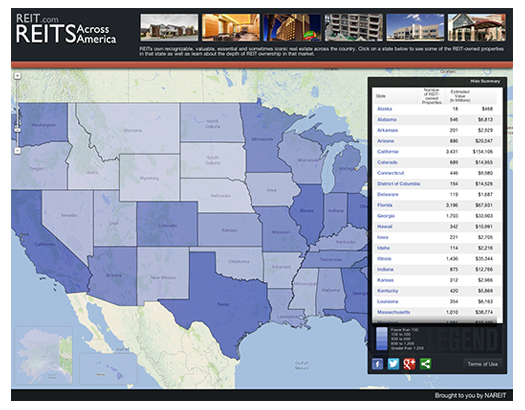|
July 1, 2013
Message from the President
 The discussion surrounding reform of the government sponsored enterprises (GSEs) Fannie Mae and Freddie Mac was given a new focus last week with the introduction in the Senate of the Housing Finance Reform and Taxpayer Protection Act of 2013. The GSE reform bill was introduced by Senators Bob Corker (R-TN) and Mark Warner (D-VA) with bipartisan support from six co-sponsors. The discussion surrounding reform of the government sponsored enterprises (GSEs) Fannie Mae and Freddie Mac was given a new focus last week with the introduction in the Senate of the Housing Finance Reform and Taxpayer Protection Act of 2013. The GSE reform bill was introduced by Senators Bob Corker (R-TN) and Mark Warner (D-VA) with bipartisan support from six co-sponsors.
It has been nearly five years since the federal government placed the then-insolvent Fannie Mae and Freddie Mac under its conservatorship, ultimately spending more than $100 billion to rescue and preserve their operations. The bill introduced last week would unwind Fannie Mae’s and Freddie Mac’s current portfolios of mortgages and mortgage-backed securities, representing a combined $1.4 trillion in assets, within five years and cease the companies’ operations.
Mortgage finance, under the legislation, would be concentrated in the private sector and a new government agency, the Federal Mortgage Insurance Corp., would be created – not to hold mortgages, but to guarantee them and to oversee the mortgage securitization marketplace. The story below provides additional information about the bill.
While the proposed legislation formally elevates the issue of GSE reform to the Congressional level, it is not the only blueprint for reform of Fannie Mae and Freddie Mac being discussed in Washington. In fact, there are at least 18 GSE reform plans developed by think tanks, industry groups and individuals being circulated.
The question of what is to follow Fannie and Freddie, and what entities will perform their functions, is critically important to the REIT industry.
It is important to mortgage REITs, which already play an important role in financing the housing market and have proven to be an efficient and effective way to hold mortgage debt. It also is important to residential REITs, since the GSEs have been actively involved in buying, guaranteeing and securitizing multifamily mortgages.
NAREIT will closely monitor the progress of the legislation introduced last week, as well as other proposals for GSE reform; consult with our members, including the members of our Mortgage REIT Council; and provide our industry’s perspectives to policymakers and thought leaders on this important issue.

Steven A. Wechsler
President and CEO
Senate GSE Reform Proposal Introduced
 Influential lawmakers and Washington policy experts have recently advanced housing finance reform proposals that are beginning to garner significant attention. Influential lawmakers and Washington policy experts have recently advanced housing finance reform proposals that are beginning to garner significant attention.
A bipartisan group of lawmakers led by Sens. Bob Corker (R-TN) and Mark Warner (D-VA) and including Sens. Mike Johanns (R-NE), Jon Tester (D-MT), Dean Heller (R-NV), Heidi Heitkamp (D-ND), Jerry Moran (R-KS) and Kay Hagan (D-NC) last week introduced the “Housing Finance Reform and Taxpayer Protection Act of 2013” (S. 1217). Their proposal calls for replacing Fannie Mae and Freddie Mac within five years with a new governmental entity similar to the Federal Deposit Insurance Corp.
 The new entity, the Federal Mortgage Insurance Corp. (FMIC), would not have the ability to purchase or hold mortgages. Instead, it would: The new entity, the Federal Mortgage Insurance Corp. (FMIC), would not have the ability to purchase or hold mortgages. Instead, it would:
-
Support and oversee private sector securitization activities by developing standard form credit risk-sharing mechanisms, products, structures, contracts and standards for the approval of private issuers of MBS;
-
Provide market liquidity by insuring the portion of covered securities for which private market participants have not taken a first loss position;
-
Charge and collect fees, including guarantee fees (“g-fees”) to be charged to private sector participants; and
-
Serve as a catastrophic reinsurer.
Separately, the Milken Institute, Moody’s and the Urban Institute on June 19 released a joint proposal on housing reform. The report sets forth a structure similar to the one proposed in the Housing Finance Reform Act, but it also includes a detailed proposal to fund efforts to expand affordable housing.
The report recommends the abolishment of Fannie Mae and Freddie Mac. It calls for the creation of a new federal government overseer, also called the FMIC, financed by g-fees. Additionally, the report recommends creating a governmental “Market Access Fund” (MAF) to be financed by an assessment of six basis points on all MBS.
The Center for American Progress and La Raza, a Washington-based Hispanic Advocacy Organization, issued a report on June 5 that recommends assessing a fee on future securitized home loans to fund new housing projects for lower-income Americans. The program would replace efforts undertaken by Fannie and Freddie to fund affordable housing.
(Contact: Victoria Rostow at vrostow@nareit.com)
Baucus, Hatch Solicit Input on Tax Expenditures
  The leadership of the Senate Finance Committee wrote to their Senate colleagues last week asking for suggestions on comprehensive tax reform. The leadership of the Senate Finance Committee wrote to their Senate colleagues last week asking for suggestions on comprehensive tax reform.
In a letter to membership of the Senate, Sens. Max Baucus (D-MT), who chairs the committee, and Orrin Hatch (R-UT), the committee's ranking Republican, said the tax reform process is "entering the home stretch." Baucus and Hatch noted that the Finance Committee has been studying tax reform for three years. This year, the committee has issued 10 papers laying out various reform options.
Baucus and Hatch asked the lawmakers to submit legislative language or proposals regarding how particular tax expenditures meet three criteria: growing the economy, creating a fairer the tax code and promoting "other important policy objectives."
(Contact: Tony Edwards at tedwards@nareit.com)
First Half of 2013 Productive for Investor Outreach
 During the first six months of 2013, NAREIT conducted 207 meetings with many of the largest and most influential investment organizations within the institutional investment marketplace. Collectively, these entities represent close to $34 trillion in assets under management or advisement. During the first six months of 2013, NAREIT conducted 207 meetings with many of the largest and most influential investment organizations within the institutional investment marketplace. Collectively, these entities represent close to $34 trillion in assets under management or advisement.
The 207 meetings were held with organizations across all targeted investment cohorts, including:
-
39 with prominent domestic and international pension, retirement, and sovereign wealth fund plan sponsors representing more than $809 billion in assets;
-
29 with investment consultants having assets under advisement of more than $14 trillion;
-
105 with investment managers representing close to $19 trillion of assets under management and sponsoring global and domestic products for the institutional and retail investor markets; and
-
Another 34 meetings with other organizations and associations active in the investment management and retirement industry.
NAREIT was also active on the institutional investment conference circuit, participating in 21 events. To provide perspective, during the same time period in 2012, NAREIT participated in 19 such conferences.
NAREIT’s investor outreach team has positioned itself as a resource for pension, endowment and retirement plans, assisting them in determining the most effective ways to use REITs in their portfolios. Through investor meetings and participation at industry conferences and events, the team identifies investment themes and trends challenging investors. Highlighting findings from NAREIT’s internal and sponsored research, NAREIT delivers a perspective on the role REIT-based real estate investment might play in addressing such challenges and trends.
Providing credible research, staff expertise and a relationship-oriented approach has contributed to help boost REIT investment among pension and retirement plans. Pensions & Investments magazine recently reported that the top 200 DB plans, many with which NAREIT maintains an ongoing relationship, held $22.4 billion in REITs in 2012, an increase of over $5 billion from the amount reported in 2011.
Further, data from the Standard & Poor's Money Market Directory indicates that 23 of the 25 largest public pension plan sponsors in the U.S. invest in REITs today, and 16 of the 25 largest corporate pension plan sponsors report REIT holdings, including the five largest corporations. In fact, an analysis of data from 33 U.S. pension, retirement and endowment funds each having total assets greater than $250 million found that there are 354 plan sponsors reporting holdings in REITs. These organizations represent all segments of the market, including corporations, government agencies, unions, and educational endowments. Moreover, these data represent only a portion of the total investment in REITs by these institutional investors because they reflect REIT investments only by those plan sponsors that report dedicated REIT allocations. Thus, REIT-based real estate investment among these institutional investors is even larger than what the available data indicate.
(Contact: Kurt Walten at kwalten@nareit.com)
New Tool Highlights REITs Across America

To better promote the REIT approach to real estate investment with policymakers, the media, investors and the public, NAREIT has developed an interactive map accessible through our website, REIT.com. This map, “REITs Across America,” highlights the fact that REITs invest in communities throughout the nation by owning and financing assets in each and every state and that these assets include a wide variety of property types.
“REITs Across America” includes state-by-state breakdown of the number of REIT-owned properties as well as market value. To identify REIT-related properties, the map utilizes SNL data. To estimate aggregate market value by state, the map uses methodology developed by NAREIT. To illustrate the range and types of properties provided by REITs, photos of representative properties owned by REITs are used for each state in the map.
The map is intended to be a living document and we encourage companies who have not sent in photos or would like to send additional photos to reach out to Matt Bechard (202.739.9448 or mbechard@nareit.com), NAREIT’s vice president for Publications, to add property photos from your company to the map.
(Contact: Matt Bechard at mbechard@nareit.com)
NAREIT Joins Coalition in Backing Sustainability Legislation
  NAREIT and a coalition of industry groups wrote to the Senate Committee on Energy & Natural Resources last week in support of a bill to promote energy efficiency in commercial buildings. NAREIT and a coalition of industry groups wrote to the Senate Committee on Energy & Natural Resources last week in support of a bill to promote energy efficiency in commercial buildings.
The coalition endorsed the “Better Buildings Act of 2013,” S. 1191, introduced by Sens. Michael Bennet (D-CO) and Kelly Ayotte (R-NH).
“The act takes a market-driven, voluntary, ‘best practices’ approach to align building owners and their tenants to reduce demands on the energy grid,” the groups said. “As this proposal fits within existing voluntary programs, it has no regulatory impact and does not require new appropriations.”
The bill was among a host of proposals under consideration at a June 25 hearing of the committee’s energy subcommittee. Brad Molotsky, executive vice president, general counsel and secretary of Brandywine Realty Trust (NYSE: BDN), testified at the hearing.
(Contact: Kirk Freeman at kfreeman@nareit.com)
NAREIT Participates in FTSE Webcast
 Calvin Schnure, NAREIT’s vice president of research and industry information, was a panelist in a June 27 webcast sponsored by FTSE. Topics included some of the important attributes of real estate as well as the risk and return and diversification characteristics of REITs. Calvin Schnure, NAREIT’s vice president of research and industry information, was a panelist in a June 27 webcast sponsored by FTSE. Topics included some of the important attributes of real estate as well as the risk and return and diversification characteristics of REITs.
Other panelists in the discussion included Fraser Hughes, EPRA’s director of research, indices and investor outreach, and Nizan Hamid from the research and analytics department at the FTSE Group. The webcast attracted 120 people, from various organizations, to sign up for the event.
(Contact: Calvin Schnure at cschnure@nareit.com)
Senate Confirms Pritzker for Commerce Post
 The Senate on June 25 approved Penny Pritzker’s nomination as Commerce Secretary. The Senate on June 25 approved Penny Pritzker’s nomination as Commerce Secretary.
Pritzker received 97 votes in favor of her nomination. NAREIT wrote to the Senate earlier this year in support of Pritzker’s nomination as the confirmation process was getting underway.
(Contact: Kirk Freeman at kfreeman@nareit.com)
REIT.com Videos: CEO Spotlights
REIT.com’s video team sat down with three dozen REIT CEOs during REITWeek 2013 to discuss recent company developments, strategic plans and thoughts on where the market is headed. New videos will be made available on REIT.com regularly for the next several weeks. Below is a sample of the interviews currently available.
 Terry Considine, chairman and CEO of Aimco (NYSE: AIV), described the apartment REIT’s acquisition activity as “conservative.” He explained the reasoning behind his company’s strategy and what he’s witnessing so far in the current acquisitions market. Terry Considine, chairman and CEO of Aimco (NYSE: AIV), described the apartment REIT’s acquisition activity as “conservative.” He explained the reasoning behind his company’s strategy and what he’s witnessing so far in the current acquisitions market.
“Apartments are very attractive investments, and today there’s a lot of capital trying to be invested in apartments,” he said. “So, it’s a time to be selective in which properties one buys and to look carefully at what the risk-adjusted returns might be.”
 Joseph Coradino, CEO of Pennsylvania Real Estate Investment Trust (NYSE: PEI), discussed PREIT’s efforts to re-equitize its balance sheet. Joseph Coradino, CEO of Pennsylvania Real Estate Investment Trust (NYSE: PEI), discussed PREIT’s efforts to re-equitize its balance sheet.
“We’ve made tremendous progress on our balance sheet in the past year. We think that positions us well in terms of liquidity for taking advantage of potential opportunities, as well as weathering unforeseen risks that might unfold,” he said.
 Michael Landy, president and CEO of Monmouth Real Estate Investment Corp. (NYSE: MNR), talked about a possible “sweet spot” in terms of portfolio size. Monmouth’s portfolio is currently at 9.2 million square feet, and the company has a total market capitalization of $850 million. Michael Landy, president and CEO of Monmouth Real Estate Investment Corp. (NYSE: MNR), talked about a possible “sweet spot” in terms of portfolio size. Monmouth’s portfolio is currently at 9.2 million square feet, and the company has a total market capitalization of $850 million.
“We have deals in the pipeline that will get us to 11 million square feet, keeping with our focus of long-term leases to investment-grade tenants,” he said. “These deals will get us over the $1 billion- threshold, so the sweet spot would probably be north of $1 billion. We feel that at that level we can get an investment-grade rating. We have a very strong balance sheet that has investment-grade metrics. Our income streams are secured by investment-grade tenants. So, it only behooves Monmouth that we become investment-grade ourselves.”
 Thomas McGuinness, president of Inland American Real Estate Trust, discussed his company’s increased focus on improved communications and transparency. Thomas McGuinness, president of Inland American Real Estate Trust, discussed his company’s increased focus on improved communications and transparency.
“We break our communications down into two buckets,” he said. “First is kind of the old school ways to communicate with shareholders, because we do have an elderly base, and that’s things like an 800 number, letters, mailers, flyers, et cetera. But we do have some younger constituents, so we are working on things like video we’ll be expanding that in the future and maybe even expanding onto some social media in the future. We think that the transparency we are trying to achieve isn’t just necessarily within the communications, but also within all of our filings.”
 Ed Pettinella, president and CEO of Home Properties, Inc. (NYSE: HME), said there is still plenty of opportunity in the apartment sector and continued improvement in the economy will be an ongoing catalyst. Ed Pettinella, president and CEO of Home Properties, Inc. (NYSE: HME), said there is still plenty of opportunity in the apartment sector and continued improvement in the economy will be an ongoing catalyst.
“I think the ability to raise rents is still there. The unemployment level, although it’s not in a great place now, is getting better, and the economic condition for the country is looking much better. The propensity to do well in the sector is there,” he said.
 Bruce Schanzer, president and CEO of Cedar Realty Trust (NYSE: CDR), shared his insights on the current market for acquisitions and how that fits into his company’s growth strategy. Bruce Schanzer, president and CEO of Cedar Realty Trust (NYSE: CDR), shared his insights on the current market for acquisitions and how that fits into his company’s growth strategy.
“When we think about capital allocation within our portfolio and as part of our business, we don’t just think about acquisitions. One of the things that we have done a fair amount of is investing back into our shopping centers,” he said. “We’ve done a fair amount of redevelopment and value-add into our centers. From a return perspective, we’ve found that we’re able to achieve more attractive unlevered returns on those sorts of investments relative to brand new acquisitions.”
(Contact: Matt Bechard at mbechard@nareit.com)
Supreme Court Makes Key Ruling in Permit Case
 The U.S. Supreme Court ruled last week that a land-use agency could not refuse to issue a land-use permit on the sole basis that the permit applicant did not accede to permit conditions that were costly and difficult. The U.S. Supreme Court ruled last week that a land-use agency could not refuse to issue a land-use permit on the sole basis that the permit applicant did not accede to permit conditions that were costly and difficult.
The ruling stemmed from the case of Koontz v. St. Johns River Water Management District. The Supreme Court sided with Koontz, the landowner, ruling that the district's demands weren't proportional to the environmental damage that the landowner’s development would cause.
NAREIT, together with a coalition of groups including the National Association of Realtors and the U.S. Chamber of Commerce, filed an amicus curiae brief with the Court in support of the landowner’s position.
(Contact: Victoria Rostow at vrostow@nareit.com)
NAREIT Welcomes Newest Corporate Member
 NAREIT is pleased to welcome GTJ REIT, Inc. as its newest corporate member. NAREIT is pleased to welcome GTJ REIT, Inc. as its newest corporate member.
GTJ REIT is an internally advised, public, non-listed equity REIT that acquires, owns and manages industrial and office properties in the tri-state New York area. Based in West Hempstead, N.Y., GTJ REIT’s CEO is Paul Cooper and its president is Louis Sheinker.
(Contact: Bonnie Gottlieb at bgottlieb@nareit.com)
NAREIT Participates in LPL Financial Webinar Series
 Abby McCarthy, NAREIT’s vice president of investment affairs and investor education, last week participated in LPL Financial’s Advisor University series of webinars for financial advisors. Abby McCarthy, NAREIT’s vice president of investment affairs and investor education, last week participated in LPL Financial’s Advisor University series of webinars for financial advisors.
LPL Financial is one of the largest independent broker/dealers in the United States, employing more than 13,000 independent financial advisors. LPL’s webinar series is designed to provide participating advisors with resources and options in both traditional and alternative financial products that can provide their clients with income generating investments.
McCarthy’s presentation highlighted the long-term investment attributes of publicly traded REITs as well as their role in retirement and investment portfolios.
More than 100 advisors registered for the LPL webinar.
(Contact: Abby McCarthy at amccarthy@nareit.com)
NewsBrief Will Not Publish July 8
NAREIT will not publish Monday, July 8. The next issue will publish Monday, July 15.
|

 The discussion surrounding reform of the government sponsored enterprises (GSEs) Fannie Mae and Freddie Mac was given a new focus last week with the introduction in the Senate of the Housing Finance Reform and Taxpayer Protection Act of 2013. The GSE reform bill was introduced by Senators Bob Corker (R-TN) and Mark Warner (D-VA) with bipartisan support from six co-sponsors.
The discussion surrounding reform of the government sponsored enterprises (GSEs) Fannie Mae and Freddie Mac was given a new focus last week with the introduction in the Senate of the Housing Finance Reform and Taxpayer Protection Act of 2013. The GSE reform bill was introduced by Senators Bob Corker (R-TN) and Mark Warner (D-VA) with bipartisan support from six co-sponsors.
 Influential lawmakers and Washington policy experts have recently advanced housing finance reform proposals that are beginning to garner significant attention.
Influential lawmakers and Washington policy experts have recently advanced housing finance reform proposals that are beginning to garner significant attention. The new entity, the Federal Mortgage Insurance Corp. (FMIC), would not have the ability to purchase or hold mortgages. Instead, it would:
The new entity, the Federal Mortgage Insurance Corp. (FMIC), would not have the ability to purchase or hold mortgages. Instead, it would: 
 The leadership of the Senate Finance Committee wrote to their Senate colleagues last week asking for suggestions on comprehensive tax reform.
The leadership of the Senate Finance Committee wrote to their Senate colleagues last week asking for suggestions on comprehensive tax reform. During the first six months of 2013, NAREIT conducted 207 meetings with many of the largest and most influential investment organizations within the institutional investment marketplace. Collectively, these entities represent close to $34 trillion in assets under management or advisement.
During the first six months of 2013, NAREIT conducted 207 meetings with many of the largest and most influential investment organizations within the institutional investment marketplace. Collectively, these entities represent close to $34 trillion in assets under management or advisement.

 NAREIT and a coalition of industry groups
NAREIT and a coalition of industry groups  Calvin Schnure, NAREIT’s vice president of research and industry information, was a panelist in a June 27 webcast sponsored by FTSE. Topics included some of the important attributes of real estate as well as the risk and return and diversification characteristics of REITs.
Calvin Schnure, NAREIT’s vice president of research and industry information, was a panelist in a June 27 webcast sponsored by FTSE. Topics included some of the important attributes of real estate as well as the risk and return and diversification characteristics of REITs. The Senate on June 25 approved Penny Pritzker’s nomination as Commerce Secretary.
The Senate on June 25 approved Penny Pritzker’s nomination as Commerce Secretary.





 The U.S. Supreme Court ruled last week that a land-use agency could not refuse to issue a land-use permit on the sole basis that the permit applicant did not accede to permit conditions that were costly and difficult.
The U.S. Supreme Court ruled last week that a land-use agency could not refuse to issue a land-use permit on the sole basis that the permit applicant did not accede to permit conditions that were costly and difficult. NAREIT is pleased to welcome GTJ REIT, Inc. as its newest corporate member.
NAREIT is pleased to welcome GTJ REIT, Inc. as its newest corporate member. Abby McCarthy, NAREIT’s vice president of investment affairs and investor education, last week participated in LPL Financial’s Advisor University series of webinars for financial advisors.
Abby McCarthy, NAREIT’s vice president of investment affairs and investor education, last week participated in LPL Financial’s Advisor University series of webinars for financial advisors.